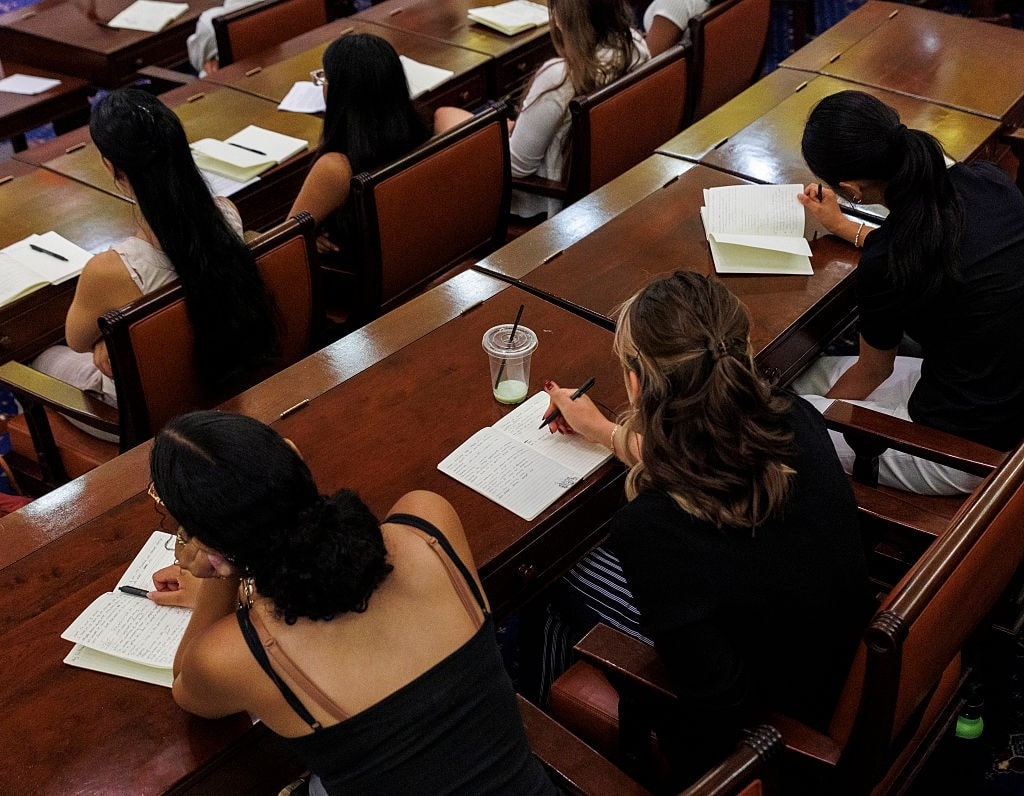The Neuroscience Behind Student Loans and the Higher Education Bubble
Neuroscience teaches us that the prefrontal cortex, which governs executive functions like decision-making, impulse control, and planning, is the last part of the brain to mature. Scientists argue that the brain’s efficiency and wiring are not fully completed until age 25.
Why does this matter to something like student loans? This developmental factor is a significant reason behind the higher education bubble.
For years, the federal government has operated on the premise that politicians and bureaucrats can offer a 19-year-old—fresh out of high school and with no real-world experience—a loan of $100,000 with a sky-high interest rate. These government-backed student loans have also enabled universities and colleges to keep raising their tuition rates, knowing the state is subsidizing their students.
This cycle has created financial paralysis for millions of young Americans, but it could soon come to an end.
The Higher Education Bubble
This past summer, President Donald Trump signed the One Big Beautiful Bill Act. While most attention focused on tax cuts and the debt ceiling, the legislation also included a key student loan provision.
As part of the Republican megabill, Washington will cap student loan borrowing effective July 1, 2026. The law introduces annual and lifetime caps on borrowing for parents of undergraduates, professional degree students, and graduate enrollees. It also establishes a total lifetime cap for all borrowers at $257,500.
This is perhaps one of the most significant reforms to higher education in years.
Post-secondary institutions are already beginning to respond. Recently, the Santa Clara School of Law announced it would reduce tuition from approximately $66,000 per year to $50,000 for the 2026-2027 school year. The institution stated that the $16,000 tuition scholarship for all incoming full-time JD students was “designed to offset the impact of the recent repeal of the Graduate Plus federal-loan program, which is effective July 1, 2026.”
With fewer young Americans enrolling in college—total enrollment is roughly 3% below pre-pandemic levels—it’s almost guaranteed that other institutions will follow Santa Clara’s lead to stimulate demand. If so, the country will witness the slow deflation of the higher education bubble.
Subsidizing Demand
Former President Ronald Reagan famously said that if you subsidize something, you get more of it. Considering what has transpired at universities and colleges this century, he has been proven correct.
Government-guaranteed student loans have fueled the steep climb in college costs. With the government underwriting the risk, universities have faced little pressure to economize. Instead of streamlining operations, many have constructed lavish buildings, ballooning bureaucracies, and have hired celebrity professors with light teaching loads—all while tuition continued climbing.
Over the past 25 years, US university tuition has rocketed 100%, outpacing general inflation. Likewise, federal student loan debt has increased from around $200 billion to almost $1.7 trillion.
The federal government has routinely attempted short-term remedies to patch up the mess both parties have created over the last few decades—from suspending interest payments to bailing out specific categories of students and graduates. But these measures have merely masked the problem.
This situation is comparable to the current government shutdown debate regarding the Affordable Care Act. Because Obamacare has been a fiscal burden for US taxpayers, politicians have had to offer subsidies to the expensive program, benefiting insurance companies.
In 2021, economists at the New York Federal Reserve concluded that government student loans raise tuition costs.
> “We find a pass-through effect on tuition of changes in subsidized loan maximums of about 60 cents on the dollar, and smaller but positive effects for unsubsidized federal loans. The subsidized loan effect is most pronounced for more expensive degrees, those offered by private institutions, and for two-year or vocational programs,” they wrote.
Unintended Consequences
There have been other unintended consequences of government-student loans. One example: social media is flooded with videos of young graduates announcing their majors in “decolonizing the fine arts” and “combating white supremacy in ant farming.”
Without the discipline of the private market, individuals enroll in degrees that offer little chance of securing steady paychecks and rewarding careers. If the free market were to take over the student loan system, lenders would ensure that borrowers are enrolling in careers in high demand. If not? Be prepared to pay a higher rate of interest to study “Orange Man Bad Studies.”
Medieval Times and the Liberal Arts
The term “liberal arts” has become a pejorative—and rightly so—but this was not always the case. It derives from the Latin *artes liberales*, meaning “tools of freedom.”
During Medieval times, the liberal arts were divided into seven main subjects within two larger categories:
– Arts of language: grammar, logic, and rhetoric
– Arts of number: arithmetic, astronomy, geometry, and music
Considering that graduates’ IQ has declined about 17 points since 1939, it’s safe to say that today’s 20-somethings would struggle with a Medieval education.
Put simply, despite the $1.7 trillion worth of student loan debt, taxpayers have subsidized mediocrity and a system that holds contempt for Western civilization.
The higher education bubble is on the brink of popping. Good riddance.
https://www.libertynation.com/trump-slowly-deflates-the-higher-education-bubble/

Be First to Comment